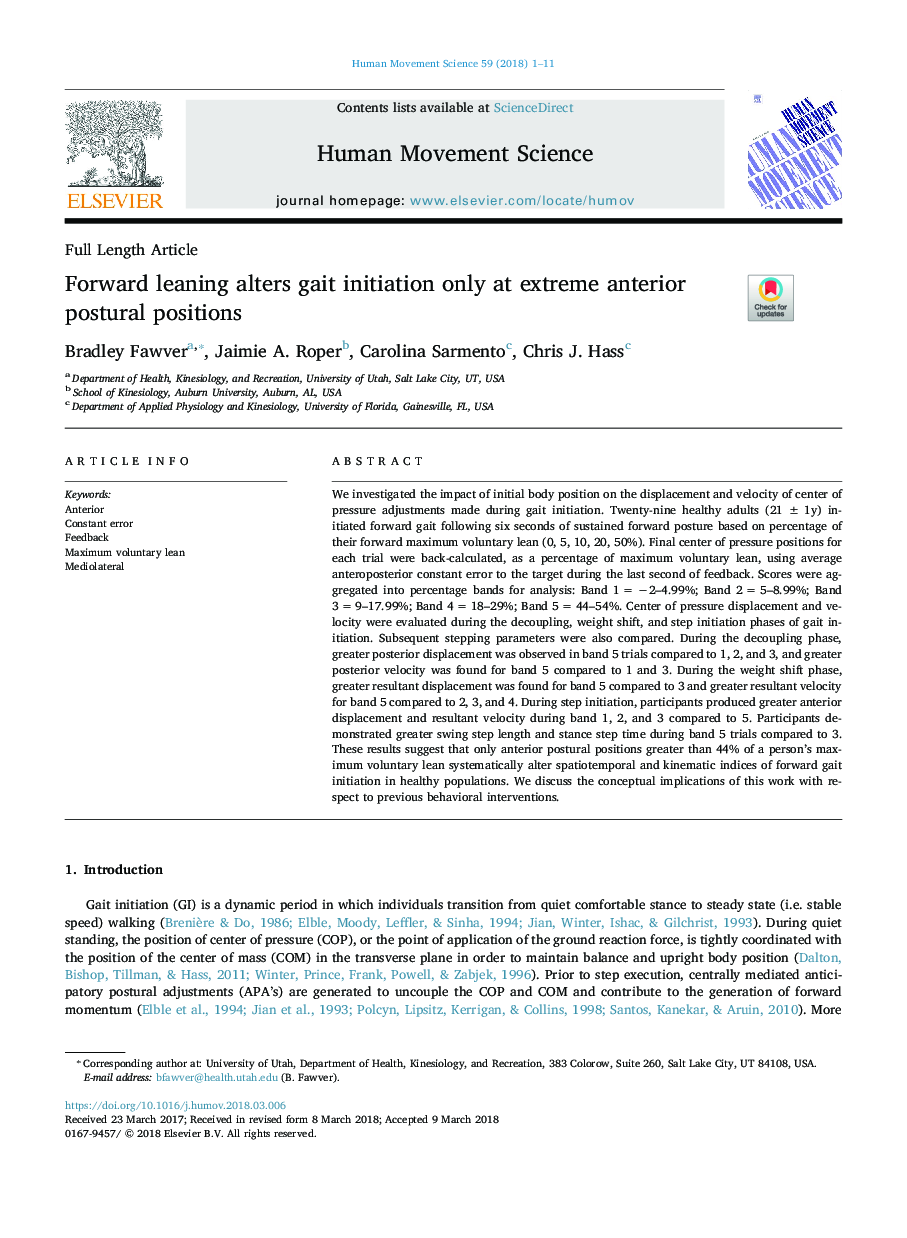| Article ID | Journal | Published Year | Pages | File Type |
|---|---|---|---|---|
| 7290861 | Human Movement Science | 2018 | 11 Pages |
Abstract
We investigated the impact of initial body position on the displacement and velocity of center of pressure adjustments made during gait initiation. Twenty-nine healthy adults (21â¯Â±â¯1y) initiated forward gait following six seconds of sustained forward posture based on percentage of their forward maximum voluntary lean (0, 5, 10, 20, 50%). Final center of pressure positions for each trial were back-calculated, as a percentage of maximum voluntary lean, using average anteroposterior constant error to the target during the last second of feedback. Scores were aggregated into percentage bands for analysis: Band 1â¯=â¯â2-4.99%; Band 2â¯=â¯5-8.99%; Band 3â¯=â¯9-17.99%; Band 4â¯=â¯18-29%; Band 5â¯=â¯44-54%. Center of pressure displacement and velocity were evaluated during the decoupling, weight shift, and step initiation phases of gait initiation. Subsequent stepping parameters were also compared. During the decoupling phase, greater posterior displacement was observed in band 5 trials compared to 1, 2, and 3, and greater posterior velocity was found for band 5 compared to 1 and 3. During the weight shift phase, greater resultant displacement was found for band 5 compared to 3 and greater resultant velocity for band 5 compared to 2, 3, and 4. During step initiation, participants produced greater anterior displacement and resultant velocity during band 1, 2, and 3 compared to 5. Participants demonstrated greater swing step length and stance step time during band 5 trials compared to 3. These results suggest that only anterior postural positions greater than 44% of a person's maximum voluntary lean systematically alter spatiotemporal and kinematic indices of forward gait initiation in healthy populations. We discuss the conceptual implications of this work with respect to previous behavioral interventions.
Related Topics
Life Sciences
Neuroscience
Cognitive Neuroscience
Authors
Bradley Fawver, Jaimie A. Roper, Carolina Sarmento, Chris J. Hass,
